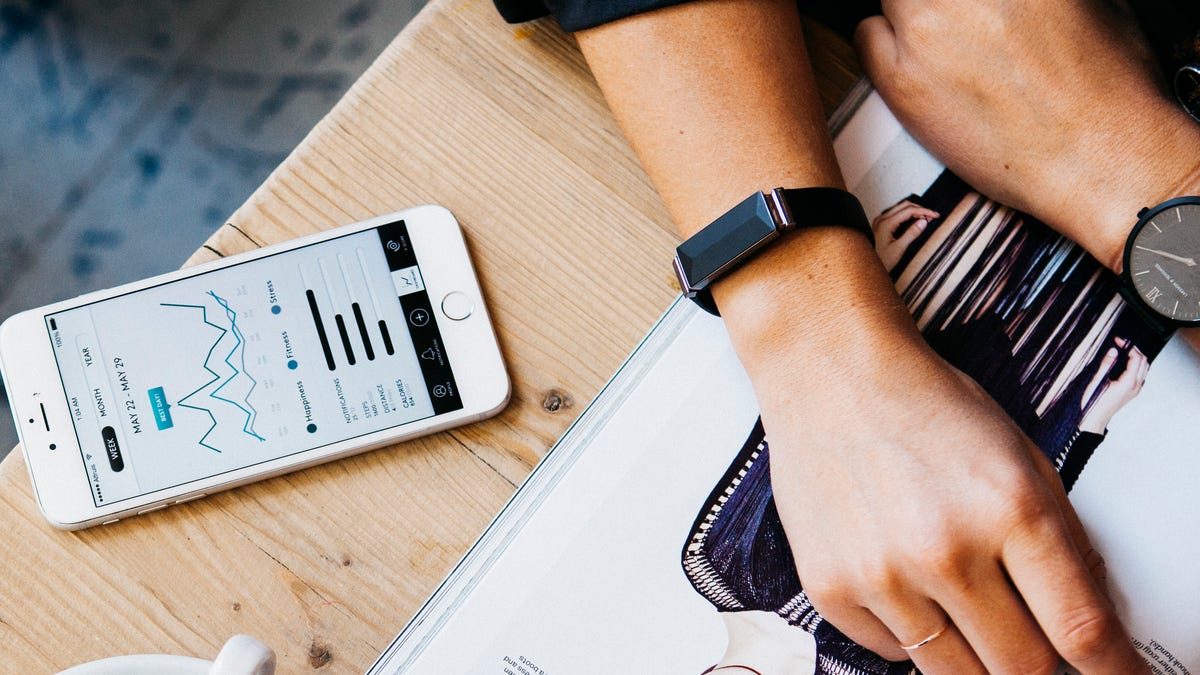Your life takes Zenta stage with the 'Fitbit for emotions'
A new wearable device, currently smashing its crowdfunding target, records when you're stressed and relates it to what you were doing.

A few years ago Kate Unsworth, a technology consultant in the corporate world, was hurtling towards burnout. "I was completely dialled in, completely swept up in the chaos," she realised. "I was completely addicted to my phone and my brain was always firing 100 times a second." So she decided to pack it in and head for the Himalayas to meditate for a month.
"And then I thought that's ridiculous," she remembers. "Why do I have to run away to the Himalayas? Why can't I live in a city like London or New York and also find stillness and peace? Because I love living in a city and actually I love chaos!"
That experience sowed the seeds for Unsworth to start a company making gadgets that simplify rather than complicate our lives. The result is Zenta, a new wearable bracelet designed to not just track your body's functions but also figure out what's causing the stresses and strains in your life.
Basically, says Unsworth, it's a "Fitbit for your emotions."
Vinaya founder Kate Unsworth.
Unsworth's company Vinaya, based in an airy loft in London's Old Street -- the startup hub nicknamed Silicon Roundabout -- is currently crowdfunding the Zenta on Indiegogo. The Zenta bracelet costs from $149 (roughly £115 or AU$200) and will ship in early 2017. The campaign finishes on Tuesday 12 July, and has already secured more than double the target amount.
The Zenta is packed with sensors that record your body's stats like heart rate, blood oxygen levels, skin temperature and blood pressure. But that's only half the story: the data is then recorded in a back-end software system that cross-references your physical reaction with the environment or situation you were in at the time, drawing on anything from the weather to the song you listened to on Soundcloud or the emoji you used in a message.
The Zenta is packed with sensors to track what your body is up to.
"When I'm in a meeting with Fabio, my chief technology officer, my heart rate often elevates," says Unsworth by way of example. "It's usually because he's really passionate and he gets me really excited about things. So my biometrics go above normal when I'm in a meeting with him, and [Zenta] puts a timestamp on the graph and auto-populates that timestamp with the meeting I was in."
When the Zenta spots that your biometrics are peaking, it invites you to log whether the situation is positive or negative -- whether you're excited or stressed. That allows you to recognise the difference between, say, the rush of being on a date compared to the shock of nearly being hit by a bus. Then over time, you build up a profile of your reactions to certain stimuli.
Zenta also works the other way, by helping you see what relaxes you. "It's really, really cool," says Unsworth, "to see how simply closing your eyes and taking a few breaths can just bring all your biometrics right down."
While Unsworth is careful to stress Vinaya is not a medical company and won't be handing out medical advice, the company is also talking to research institutions, charities and mental health organisations about how the data collected could help pinpoint more serious issues, such as depression or eating disorders.
The screen is dead
The Zenta follows the wearable Kovert ring Unsworth developed in 2014. Like the Kovert, Zenta syncs with your phone, but Unsworth believes that the days of the smartphone are numbered. "The fact that we still carry a screen around in our pocket, I'm so over it," she says. "It's a really dated way of interacting with technology."
Instead, Unsworth wants to see technology distributed around you. "Maybe you have something in your shirt when you look at any flat surfaces, you see the screen on that flat surface. When I look at it I see my desktop, when you look at it you see your desktop, in the wall, in the table, in the floor, in the ceiling."
Or maybe we could learn from the animal kingdom. "Dolphins have one of the largest prefrontal cortex of any animals," points out Unsworth, "and they've evolved to the point where they can speak two languages simultaneously. This is a really weird tangent, but a dolphin does the squeak [which they use to communicate] and also the clicks [for echolocation] at the same time, and it can communicate and listen to both languages at the same time.
"Hypothetically speaking, what if we did the same thing, unintentionally or intentionally? What if we could do the same thing with a Morse code of haptics? We could be sitting here immersed in conversation but simultaneously I'm actually interpreting a vibration that's coming into my wrist, understanding it and processing it but not losing my train of thought, the same way that a dolphin does."
Whether we learn from sea mammals or not, the important thing, Unsworth says, is to remember what connects us as people. "We should be thinking, how do humans live? What do humans need? What are the most important things? Eye contact, human connection, all of those things. Inspiration and creativity are the things that make us human. These are the things that distinguish us from robots."

